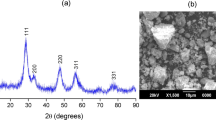Abstract
Quality of lubrication oil will impact the performance of equipment. Lubrication oil properties are being monitored periodically to ensure the quality of the oil is always good. Currently, oil change activity is conducted in time-based manner based on engine manufacturer recommendation. Therefore, lubrication oil will be discarded even though it is still useful. The idea of this paper is to consider multiple variables to assess the quality of lubrication oil as a higher number of variables are expected to give a more accurate prediction. In this study, multiple regression and artificial neural network (ANN) model were compared by assessing the R squared value and prediction error when predicting lubrication oil age. Spearman’s correlation was applied to the lubrication oil analysis data to assess the relationship between lubrication oil age with oil analysis parameters and identify the parameters that are highly correlated with oil age. Total base number (TBN), oxidation, iron (Fe), lead (Pb) and zinc (Zn) were identified as parameters that were strongly correlated with oil age. Multiple regression and ANN were applied to predict the oil age using these parameters as the predictor variables. Both models were compared based on its R squared value and prediction error namely mean square error (MSE) and mean absolute deviation (MAD). Multiple regression presented a better prediction accuracy with higher R squared value of 0.9249 and lower prediction error. However, the P value for the model were more than 0.05 which may be due to the multicollinearity that exist between the independent variables. The R squared value for ANN is considerably high with value of 0.758, which proved its ability to predict the desired oil age.
Access this chapter
Tax calculation will be finalised at checkout
Purchases are for personal use only
Similar content being viewed by others
References
Wakiru J, Pintelon L, Chemweno P, Muchiri P (2017) Analysis of lubrication oil contamination by fuel dilution with application of cluster analysis. XVII international science conference industrial system (Serbia), pp 252–257
Tanwar M, Raghavan N (2020) Lubrication oil remaining useful life prediction using multi-output Gaussian process regression IEEE. Access 8:128897–128907
Tič V, Tašner T, Lovrec D (2014) Enhanced lubricant management to reduce costs and minimise environmental impact. Energy 77:108–116
Extended Oil Drain Intervals In: Filter manufacturers council 2010
Sharma BC, Gandhi OP (2006) RUL assessment of lube oil using AHP and vector projection approach industrial lubrication and tribology 58(4):187–194
Hashim H, Haron MA, Osman FN, Al Junid SAM, Md Idros MF, Wan Nawang WN (2010) Artificial neural networks based algorithm for identifying engine oil parameters. 2nd international conference on computational intelligence, communication systems and Networks (Liverpool), pp 244–249
Kumar S, Chong I (2018) Correlation analysis to identify the effective data in machine learning: prediction of depressive disorder and emotion states. Int J Environ Res Public Health 15(12):2907
Vališ D, Žák L, Pokora O (2015) System condition estimation based on selected Tribodiagnostic data qual. Reliab. Engng Int 32:635–645
Sharma GK, Chawla OP (1988) Modelling of lubricant oil alkalinity in diesel engines Tribology Int 21(5):269–274
Idros MF, Abdul Razak AH, Al Junid SAM, Suliman AI, Halim AK (2017) FPGA implementation of predictive degradation model for engine oil lifetime IOP conference series: material science and engineering, vol 341, p 012024
Stangierski J, Weiss D, Kaczmarek A (2019) Multiple regression models and artificial neural network (ANN) as prediction tools of changes in overall quality during the storage of spreadable processed gouda cheese European food research and technology, vol 245, pp 2439–47
Tosun E, Aydin K, Bilgili M (2016) Comparison of linear regression and artificial neural network model of a diesel engine fuelled with biodiesel-alcohol mixtures. Alex Eng J 55:3081–3089
Wakiru J, Pintelon L, Muchiti P, Chemweno P (2020) A Data mining approach for lubricant-based fault diagnosis. J Qual Maint Eng
Gogtay NJ, Thatte UM (2017) Principles of correlation analysis. J Assoc Physicians India 65:78–81
Ratner B (2009) The correlation coefficient: its values range between +1/−1, or Do they? J Target Meas Anal Mark 17:139–142
Multiple regression NCSS Statistical Software. https://ncss-wpengine.netdna-ssl.com/wp-content/themes/ncss/pdf/Procedures/NCSS/Multiple_Regression.pdf
Ul-Sufie AZ, Yahya AS, Ramli NA, Hamid HA (2011) Comparison between multiple linear regression and feedforward back propagation neural network models for predicting PM10 concentration level based on gaseous and meteorological parameters Int. J Appl Sci Technol 1(4):42–49
Souza AVD, Neto AB, Piazentin JC, Dainese Junior BJ, Gomes EP, Bonini CDSB, Putti FF (2019) Artificial neural network modelling in the prediction of Bananas’ harvest. Sci Hortic 257:108724
Sapna S, Tamilasari A, Kumar MP (2012) Backpropagation learning algorithm based on Levenberg Marquardt algorithm. The 4th international conference workshop on computer networks & communications, pp 393–98
Kayri M (2016) Predictive abilities of Bayesian regularization and Levenberg-Marquardt algorithms in artificial neural networks: a comparative empirical study on social data. Math Comput Appl 21(20):1–11
Sheela KG, Deepa SN (2013) Review on methods to fix number of hidden neurons in neural networks mathematical problems in engineering
Panchal FS, Panchal M (2014) Review on methods of selecting number of hidden nodes in artificial neural network Int. J Comput Sci Mobile Comput 3(11):455–464
Abd Majid MA, Soomro Afzal A, Akmar A (2019) Artificial neural network modelling approach for assessment of stratified thermal energy storage tank ARPN. J Eng Appl Sci 14(19):3371–3378
Acknowledgements
The authors would like to acknowledge the financial support provided by the Universiti Teknologi PETRONAS.
Author information
Authors and Affiliations
Corresponding author
Editor information
Editors and Affiliations
Rights and permissions
Copyright information
© 2023 Institute of Technology PETRONAS Sdn Bhd
About this paper
Cite this paper
Mohammad Nazari, N., Muhammad, M. (2023). Comparative Analysis of Lubrication Oil Age Prediction Model. In: Ahmad, F., Al-Kayiem, H.H., King Soon, W.P. (eds) ICPER 2020. Lecture Notes in Mechanical Engineering. Springer, Singapore. https://doi.org/10.1007/978-981-19-1939-8_53
Download citation
DOI: https://doi.org/10.1007/978-981-19-1939-8_53
Published:
Publisher Name: Springer, Singapore
Print ISBN: 978-981-19-1938-1
Online ISBN: 978-981-19-1939-8
eBook Packages: EngineeringEngineering (R0)




